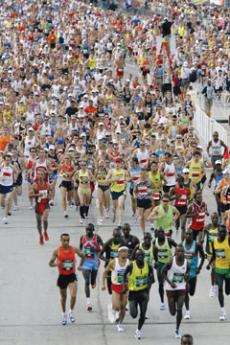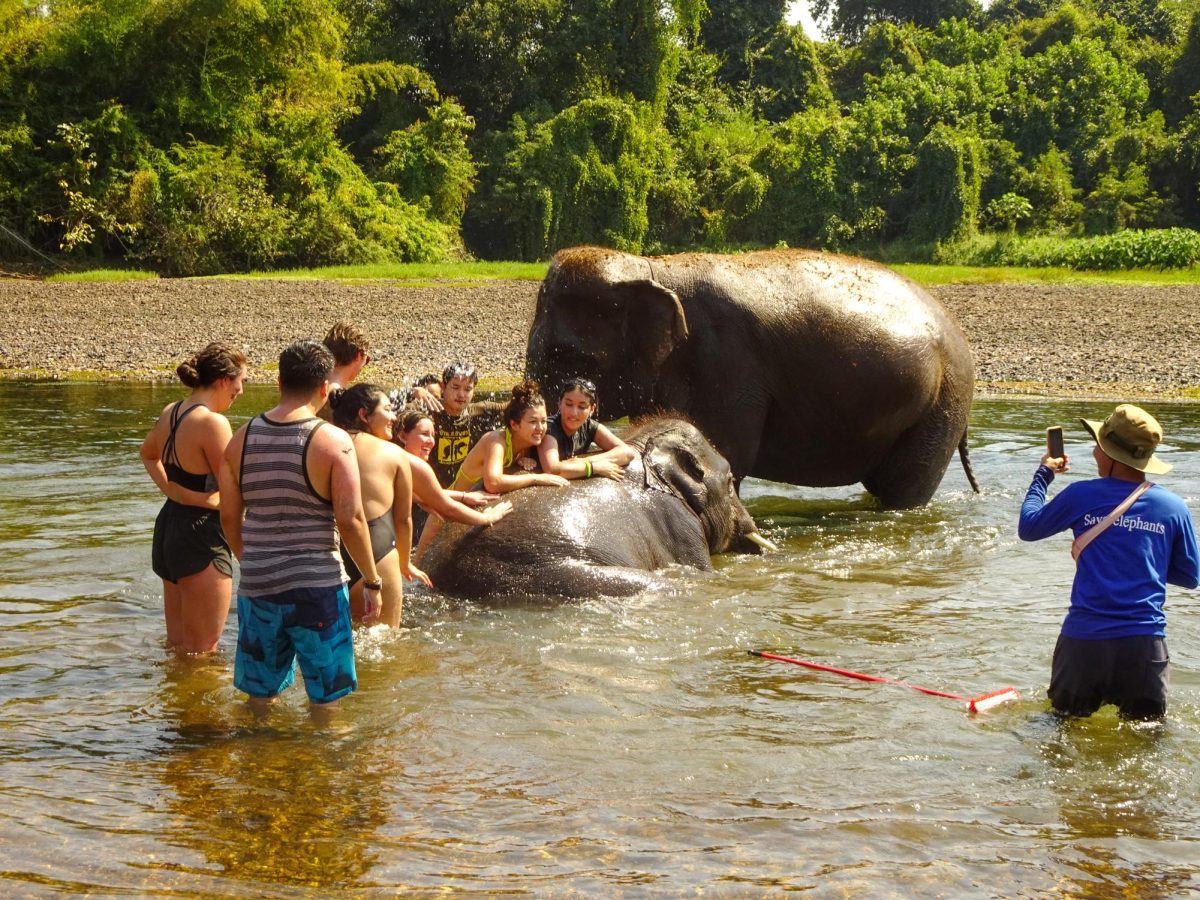 MCT Campus
MCT CampusJune 1, 2008, is going to be a day to remember. It’s the reason you completed 100 percent of your homework, aced your tests and accomplished everything you said you would in the first half of the year.In just four months, the Rock ‘n’ Roll Marathon will blast through San Diego, celebrating its 11th anniversary, and you are going to compete in it. The 26.2-mile run can be accomplished by a healthy individual, but you have to start training now. Most beginner programs take about 22 weeks, and there are only 16 weeks until race day. So, unless you’ve already been exercising, this is going to be more of a marathon survivor’s guide. Whether running for recreation or competition, there are vital steps to ensure a safe and strong finish.The two key elements of long-distance running are endurance and strength. In the beginning and middle stages of training, it’s best to focus on endurance by running various routes incorporating hills to build the strength and stamina needed to jam through the race. But you have to do this consistently, and your runs will need to be differentiated.Running too far and training too frequently without proper conditioning and rest can leave you injury-prone. Slow and steady wins the race (or at least gets you across the finish line). The most important thing about training is that you’re consistent.”Beginners will need to have the ability to run for at least 30 minutes three times a week and be able to do so comfortably,” running coach and marathon expert Bill Aaron said. “The key word is commitment. If you can commit to it, then you can handle all the things that revolve around that commitment: stretching, hydrating, eating well, doing your runs during the week.”Just like anything else, to be successful you need to have a plan.Go online and find a marathon training program that you can faithfully follow. Many of them are quite advanced, but here are the basics:-A longer endurance run (40 – 60 minutes) once a week.-Follow up the next day with active recovery (brisk walk, swim, bike or elliptical).-A 30- to 40-minute speed workout early in the week.-The following day, a maintenance run (45 minutes).-One day of interval training.-Running hills.-Rest: Eat healthy, prepare for endurance, run the next day.-Repeat.-Stretch after every workout for at least 10 minutes.It’s essential for beginners to first accomplish a 30-minute run three times a week with ease. Jumping right into the seven day grind may cause or increase the potential for injury. It’s also important to progress each week by about 10 percent, or 10 minutes, each week, typically added to the endurance runs.Before the miles start piling on, you’re going to want a new pair of shoes that will be used for running exclusively. New shoes need to be broken in before long runs and especially before the main event. This is to prevent blisters and to properly break in the shoe’s cushioning. The wrong shoe can cause foot, ankle, knee and other injuries that will sideline you.Visit a store that has a staff who can analyze your every step, such as Road Runner Sports in Clairemont. A “Fit Expert” will examine your foot’s key contact points, the way you run and get you measured for the proper fit.”New runners often start out with the wrong shoes,” Garrett Sheehan of Road Runner’s Shoe Dog staff said. “Especially when you’re new to running, it’s important to find the right shoe with the right support.”While you’re at the store, consider purchasing light-weight running attire that wicks the sweat away from your body and won’t slow you down. Big 5 has adequate running and exercise apparel for less than $20. Also, pick up a wristwatch with a start-stop timer (one that shows elapsed time) and pick up two pairs of running socks. You’ll want to wear both pairs on days you run long distances to prevent blisters. Two more things to remember: sunglasses and sunscreen.Right around the middle of April, it’s time to focus on how fast you want to run the marathon. Your body is partially conditioned, your shoes are broken in and you still have six weeks to tune your body. It’s time to set goals.To finish under the maximum allowed time (seven hours), you need to run each of the 26.2 miles at an average pace of 16 minutes per mile. Just one minute slower and you’re on the verge of disqualification.To finish under 6 hours: 13.75 minutes per mile.To finish under 5 hours: 11 minutes per mile.To finish under 4 hours: 9 minutes per mile.To finish under 3 hours: 7 minutes per mile.To set the course record (2:08:33 is current) each mile would have to be run in four minutes and 46 seconds.Some words of encouragement: You are running for a cause. It’s the first marathon for 50 percent of all Rock ‘n’ Roll San Diego entrants. There are 45 bands and 2,000 cheerleaders along the route to keep you pumped up.Happy running.






